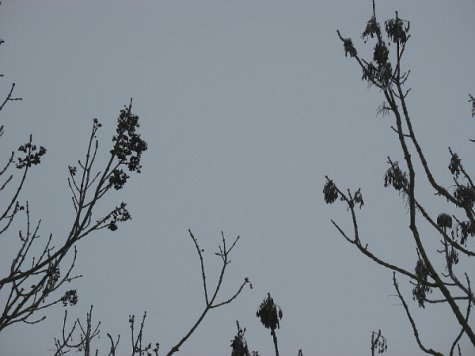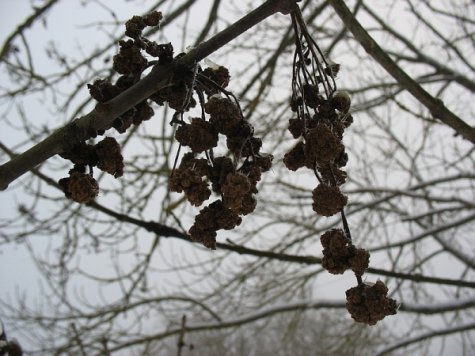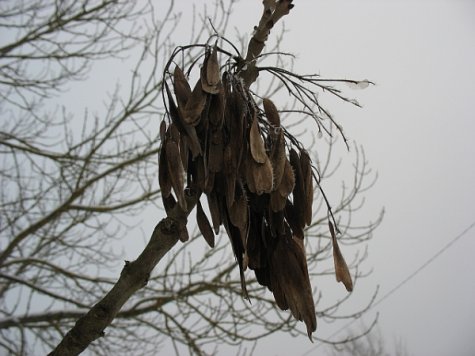Ash flower gall mite
Text and photos Vello Keppart
Translation: Liis
Left: ash shoots with mites, right: ash shoots with normal seed clusters
The crowns of ashes are rather sparse and the shoots relatively thick. The role of fine twigs has been taken over by the long, feather-like divided or pinnately compound leaves. In winter we see clusters of seeds in the crowns of ashes, the seeds spill down from autumn until spring. Strange cauliflower-like brown clumps are visible in the crowns of some ashes instead of seeds: they are malformations of the flowers, induced by the ash flower gall mite. Since there are no other species that produce similar damage on ashes it is possible to identify the animal without seeing it. The scientific name of the ash flower gall mite is Aceria fraxinivora (Nalepa, 1909), synonym Eriophyes fraxinivorus.
Damage by the ash flower gall mite on common ash
The mites are only 0,15-0,2 mm long, they suck on the contents of the plant cells, causing malformations; the animals live hidden in the galls. The tiny animals have no eyes nor even tracheae, i e they breathe by the body surface. The gall mites reproduce without maturing. The retarding of the development of the individual and reproduction by larvae is called neoteny. Essentially they are prematurely hatched embryos that do not even have the two rear leg pairs, but are capable of reproduction. Gall mites propagate in a half-embryonic state, the entire development takes place in the galls and is interrupted because of the neoteny. (Gijarov et al 1984: 83-84)
The summertime animals live and develop in the galls, the wintertime females appear in autumn, exit from the galls and winter between the bud scales. Gall mites are not a threat to the tree, but seeds are not produced and the ashes will not have a natural renewal.
The seeds of the common ash spread during the whole of winter. They are food for e g bullfinches.
Literature:
Giljarov, M. S., Krõžanovski, O. L., Mamajev, B. M., Pravdin, F. N., Dlusski, G. M., Lange, A. B., Turpajeva, E. P.Loomade elu: 3. kd. Selgrootud 3. osa. Tallinn: Valgus, 1984.











